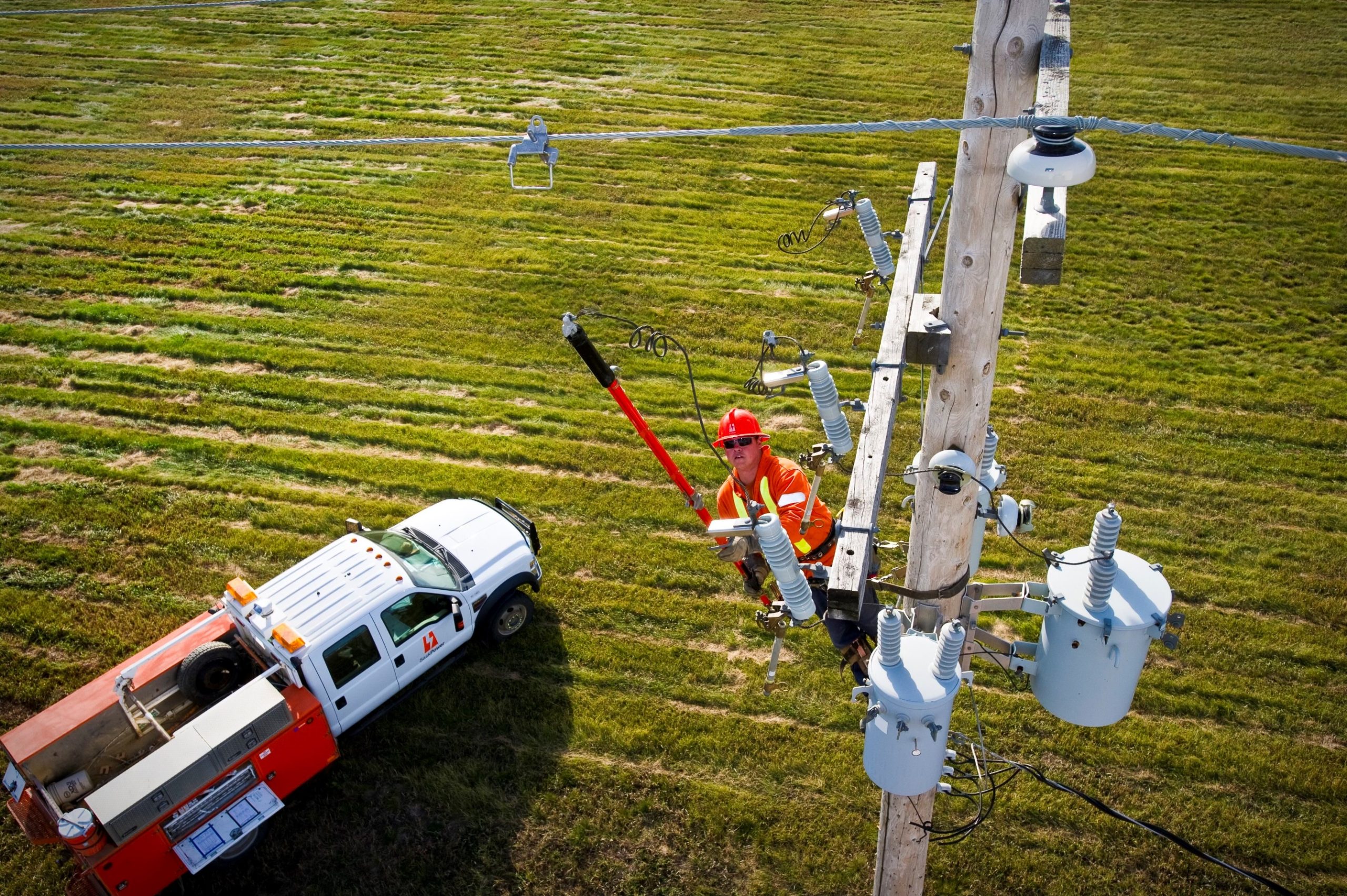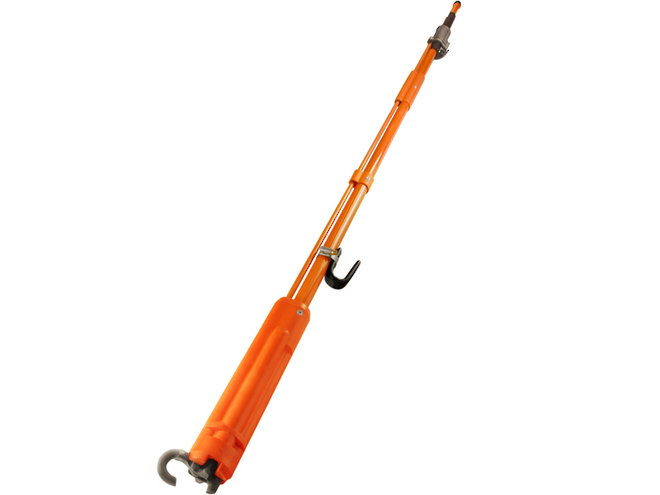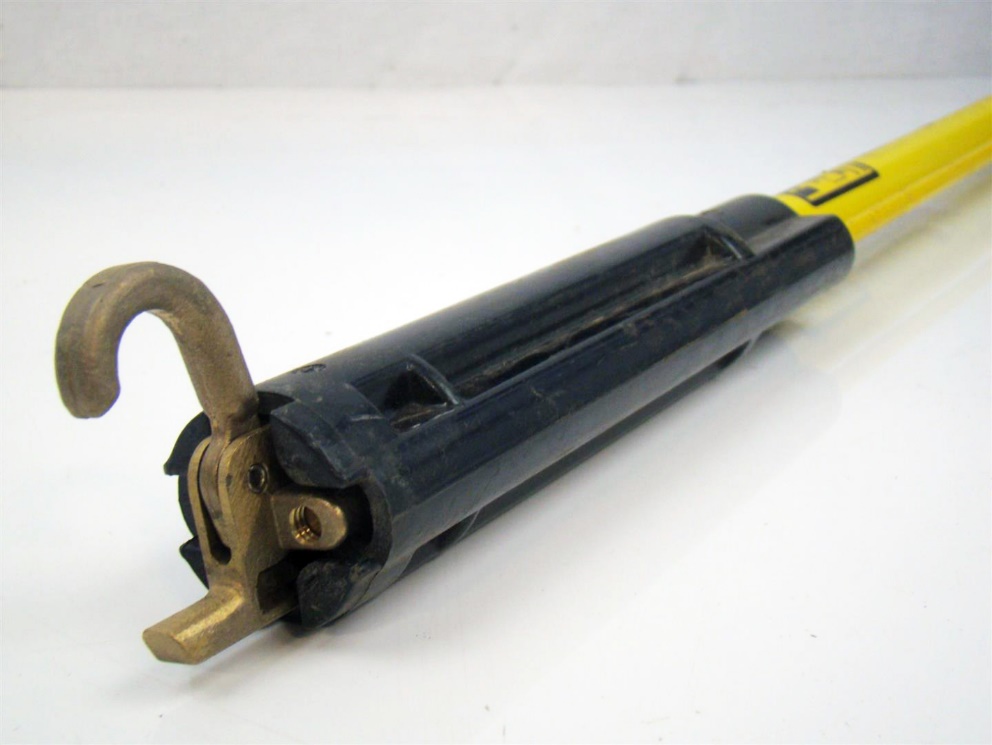24 Outcome 4: Live Line Tools
Section Information
Outcome/Competency: You will be able to describe the use and care of live line tools
Timing: 1h45
Rationale:
Why is it important for you to learn this skill?
Live lines can be particularly dangerous because they are conductors that conduct electricity. As such Powerline technicians need to exercise special care to protect themselves and others from injury and even death. Learning the proper care and maintenance as well as how to inspect and clean basic live line tools will decrease the chance of injury based on malfunction or misuse.
Objectives:
To be competent in this area, the individual must be able to:
- Identify and describe basic live line tools
- Describe the care and maintenance of basic live line tools
- Demonstrate the procedure inspect and clean basic live line tools
Learning Goals
- Describe care, maintenance, cleaning, and inspection of live line tools
Introduction:
In this section you will learn about basic hot sticks, their maintenance, and how to use grip-all and telescopic hotsticks. You will be presented with concepts and then given opportunities to test your understanding with short review exercises.
Instructions:
- Cover the following content in each topic as a group (either reading out loud or independently) then give an opportunity to answer any questions.
- Have students do the review questions independently, then take up answers.
Topic: Basic Hot Sticks (45m)

Figure 7 Using a hot stick. Attr. SaskPower
Introduction
Hotsticks allow a lineman safe access to work on energized lines without causing an interruption in customer service. Hotsticks are versatile tools used to perform a variety of tasks.
 Figure 8 Hot Stick
Figure 8 Hot Stick
 Figure 9 Hot Stick
Figure 9 Hot Stick
 Figure 10 Hot sticks
Figure 10 Hot sticks
Care and Maintenance of Hotsticks
It is the responsibility of the lineman, for their own safety, to make sure the hotstick is kept clean and in good working condition. The use of hotsticks and the regular maintenance needed to keep them in perfect operating condition is extremely important.

A well built and maintained hotstick possesses three very important characteristics:
- High di-electric strength
- High physical strength
- Lightweight
One of the most important things to remember when using and handling hotsticks and hotstick accessories, is to keep them free of moisture and dust. Never lay live line tools on the ground unless they are placed upon a clean, dry tarpaulin. If possible, live line tools and accessories should remain in the truck or tool trailer unit until needed.
Live line hotsticks incorporate a handle composed of an inner foam core and a fiberglass outer shell. The result is a strong, lightweight, and highly di-electric tool handle (telescoping tool handles do not utilize a foam core as they are hollow.) Since the handle is a solid structure throughout, our concern is contamination of the exterior surface.
When transporting hot line tools, secure the tools on solid, well padded tool racks in a truck or trailer to prevent scuffing or scratching to the exterior of the tools. Many hotstick trailers are equipped with heaters to dry out their contents between hobs. During cold weather, the trailer should be kept inside a warm building before use. If the tools can not be secured on padded racks, place in suitable hotstick containers or storage bags to keep them clean, dry, and protected.
Remember to check all live line hotstick related articles for damage or excessive wear. Inspect wheel tightners and chains or straps, as well as clevis saddle clamps, etc.
Grip-all Hotstick
This unit is stored in a canvas bag when it is not in use to keep it clean and to protect it from damage. It is folded in half for storage and opens to full length for use.
Before starting to use the hotstick on site, inspect all moving parts. Check for an inspection due date sticker to ensure that it is validated for use. Never use a stick with an expired due date.
Check rivets, pins, the jaw, and all moving parts. Operate the hotstick two or three times to make certain everything works smoothly. Ensure the jaw will close as designed.
Inspect the surface for possible cracks and damage to the fiberglass epoxy. A special silicon-impregnated cloth must be used to thoroughly wipe the fiberglass coating. Clean every crevice.
 Figure 11 Cleaning hot stick with silicone impregnated cloth
Figure 11 Cleaning hot stick with silicone impregnated cloth
This is important to maintain the di-electric properties of the hotstick because dirt and moisture may allow current to flow along the stick.
 Figure 12 Telescopic hot stick
Figure 12 Telescopic hot stick
When using the grip-all hotstick, hook the jaw into the eye and slide the handle back past the safety stop. Loosen the clamp and fully retract the handle. The operator now has complete control of the hotline clamp.
Telescopic Hotstick
The main uses of the telescoping hotstick are measuring the line clearance and replacing fuses from the ground. The universal end fitting on the insulated top section accepts a wide variety of attachments.
This hotstick has multi fiberglass epoxy rods inside which telescope out. A locking button holds each section in position. It also has a graduated scale for measuring purposes and the height is read on the scale at the top of the bottom section of the stick.
As with all hotline tools, careful maintenance is essential for safety. Check all working parts such as the locking buttons and top connection. Carefully examine to find flaws along the entire length.
Check the inspection due date sticker to ensure that it is valid for use.

 Figure 13 Hot stick certification sticker
Figure 13 Hot stick certification sticker
Return the hotstick for re-testing if the test date has expired or if there is damage. Don’t attempt to make repairs.
Clean the hotstick by wiping the entire length with a silicon cloth. Clean every crevice on the entire hotstick. When you are finished using the hotstick, ensure cleanliness and replace it in the canvas bag for storage.
Review Exercises: Live Line Tools (45m)
- List the three characteristics of a well-built hotstick.
- Do not use a hotstick if: (three things)
- Before any live line tool is applied to an energized conductor, it must be ________________down with a ___________________________cloth.
- ___________________________and_______________________ may allow current to flow along the surface of the hotstick.
- ( T / F ) If the inspection due date on a grip – all hotstick is expired, you may continue to use the stick if it appears to be clean.
- Match the appropriate hotstick shown in the left column with the tasks shown in the right column.
- Grip-all hotstick
- _____ Refuse a blown take-off structure from the ground.
- Telescopic hotstick
- _____Install a large bale clamp
- _____Operate in an underground padmount transformer.
- _____Measure a power line for adequate clearance.
( T / F ) Before using a grip-all hotstick, it must be inspected for proper operation, tight rivets, and thoroughly wiped with a silicon cloth.
- ( T / F ) Hotsticks are to be stored only in a hotstick trailer.
- ( T / F ) Hotsticks can be used beyond the test date if they appear to be in proper working condition.
- Explain the proper method of storing a hotstick.
Answer Key
|
|
|
|
|
|
|
|
|
|
